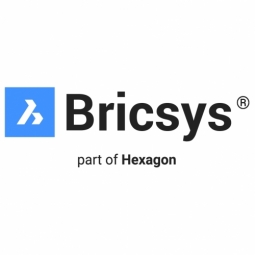技术
- 分析与建模 - 虚拟和增强现实(AR/VR)软件
- 可穿戴设备 - 虚拟现实(VR)眼镜/耳机/控制器
适用行业
- 水泥
- 建筑与基础设施
适用功能
- 产品研发
用例
- 施工管理
- 虚拟现实
关于客户
IQTA 是一家总部位于荷兰的多功能房地产公司,由企业家 Bastiaan van der Steen 领导。该公司参与各种项目,从系统化建设到常规项目开发。他们的一些著名项目包括使用高质量设计的集装箱和与海运集装箱大小相似的微型房屋开发临时住房,以及在前汽车陈列室中开发带停车场的公寓大楼。该公司多元化的产品组合需要与多方协作以及能够处理 BIM 和机械工程方面的多功能 CAD 软件。
挑战
Bastiaan van der Steen 是荷兰一家多功能房地产公司 IQTA 背后的企业家,他面临着挑战。他的公司参与了从系统化建设到常规项目开发的各种项目,需要一种更有效的方式来管理其多样化的投资组合。 IQTA 正在开发多个项目,包括使用高质量设计集装箱的临时住房和尺寸与海运集装箱相似的微型房屋。此外,他们还在以前的汽车陈列室中开发了一座带有停车场的公寓大楼。这些项目的复杂性和多样性需要与多方协作,这促使 Bastiaan 开始寻找新的 CAD 软件。现有的解决方案无法满足公司的多样化需求,特别是在管理项目的机械工程方面。
解决方案
IQTA 在 BricsCAD Ultimate 中找到了解决方案,这是一个包含 BIM 和 Mechanical 功能的综合 CAD 软件包。由于巴斯蒂安的房地产背景和他的几个项目的机械工程特点,该软件对他特别有吸引力。借助 BricsCAD Ultimate,他能够编辑项目中的各种机械零件,这是以前的软件无法实现的。此外,该软件在一个工作区中提供了所有内容,使管理和监督项目的各个方面变得更加容易。 BricsCAD Ultimate 的另一个显着优势是与其他软件包相比的成本效益。为了进一步增强 BricsCAD 的功能,Bastiaan 将其许可证与实时渲染和虚拟现实插件 Enscape 结合起来。这使他能够快速制作设计的渲染图,这项任务之前被外包给第三方。
运营影响
数量效益

Case Study missing?
Start adding your own!
Register with your work email and create a new case study profile for your business.
相关案例.

Case Study
System 800xA at Indian Cement Plants
Chettinad Cement recognized that further efficiencies could be achieved in its cement manufacturing process. It looked to investing in comprehensive operational and control technologies to manage and derive productivity and energy efficiency gains from the assets on Line 2, their second plant in India.

Case Study
IoT System for Tunnel Construction
The Zenitaka Corporation ('Zenitaka') has two major business areas: its architectural business focuses on structures such as government buildings, office buildings, and commercial facilities, while its civil engineering business is targeted at structures such as tunnels, bridges and dams. Within these areas, there presented two issues that have always persisted in regard to the construction of mountain tunnels. These issues are 'improving safety" and "reducing energy consumption". Mountain tunnels construction requires a massive amount of electricity. This is because there are many kinds of electrical equipment being used day and night, including construction machinery, construction lighting, and ventilating fan. Despite this, the amount of power consumption is generally not tightly managed. In many cases, the exact amount of power consumption is only ascertained when the bill from the power company becomes available. Sometimes, corporations install demand-monitoring equipment to help curb the maximum power demanded. However, even in these cases, the devices only allow the total volume of power consumption to be ascertained, or they may issue warnings to prevent the contracted volume of power from being exceeded. In order to tackle the issue of reducing power consumption, it was first necessary to obtain an accurate breakdown of how much power was being used in each particular area. In other words, we needed to be able to visualize the amount of power being consumed. Safety, was also not being managed very rigorously. Even now, tunnel construction sites often use a 'name label' system for managing entry into the work site. Specifically, red labels with white reverse sides that bear the workers' names on both sides are displayed at the tunnel work site entrance. The workers themselves then flip the name label to the appropriate side when entering or exiting from the work site to indicate whether or not they are working inside the tunnel at any given time. If a worker forgets to flip his or her name label when entering or exiting from the tunnel, management cannot be performed effectively. In order to tackle the challenges mentioned above, Zenitaka decided to build a system that could improve the safety of tunnel construction as well as reduce the amount of power consumed. In other words, this new system would facilitate a clear picture of which workers were working in each location at the mountain tunnel construction site, as well as which processes were being carried out at those respective locations at any given time. The system would maintain the safety of all workers while also carefully controlling the electrical equipment to reduce unnecessary power consumption. Having decided on the concept, our next concern was whether there existed any kind of robust hardware that would not break down at the construction work site, that could move freely in response to changes in the working environment, and that could accurately detect workers and vehicles using radio frequency identification (RFID). Given that this system would involve many components that were new to Zenitaka, we decided to enlist the cooperation of E.I.Sol Co., Ltd. ('E.I.Sol') as our joint development partner, as they had provided us with a highly practical proposal.

Case Study
Splunk Partnership Ties Together Big Data & IoT Services
Splunk was faced with the need to meet emerging customer demands for interfacing IoT projects to its suite of services. The company required an IoT partner that would be able to easily and quickly integrate with its Splunk Enterprise platform, rather than allocating development resources and time to building out an IoT interface and application platform.

Case Study
Bridge monitoring in Hamburg Port
Kattwyk Bridge is used for both rail and road transport, and it has played an important role in the Port of Hamburg since 1973. However, the increasing pressure from traffic requires a monitoring solution. The goal of the project is to assess in real-time the bridge's status and dynamic responses to traffic and lift processes.

Case Study
Bellas Landscaping
Leading landscaping firm serving central Illinois streamlines operations with Samsara’s real-time fleet tracking solution: • 30+ vehicle fleet includes International Terrastar dump trucks and flatbeds, medium- and light-duty pickups from Ford and Chevrolet. Winter fleet includes of snow plows and salters.








